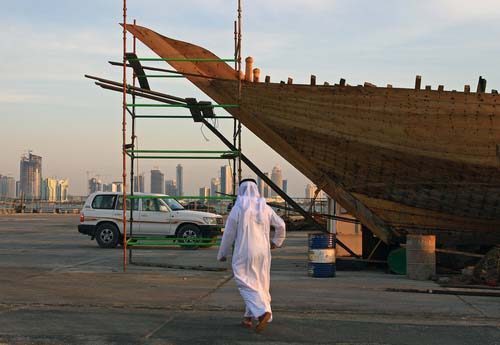
Though Qatar’s oil and gas sector will all but guarantee that the country enjoys a strong fiscal year, the government faces a number of potentially daunting challenges in other economic arenas, as decreases in productivity, a surge in the expat population and rising inflation threaten future growth.
That is the frank conclusion reached by the recently released Qatar Economic Outlook 2013-2014, which was released by the General Secretariat for Development Planning.
According to the QEO, the nation’s population surged past 1.96 million people last month, and is expected to reach the 2.2 million mark by 2014, largely due to demand for expat labor in the run-up to the 2022 World Cup.
But with growth comes a dismaying drop in productivity, the report states, with output per individual in the non-oil and gas sector declining an average of 4 percent since 2006.
The QEO states:
Although labour productivity measures need to be interpreted with care, if these data reflect inefficiencies and a non-oil and gas economy operating below its potential, they could point to potential dividends to be reaped from investing in mechanization and skills upgrading in the non-oil and gas economy.
Such investments are, however, unlikely to occur spontaneously and would require changes in the incentives faced by various actors in Qatar’s labour market.
And in the long term, falling productivity and the “persistence of low wages” could affect Qatar’s future competitiveness, its push to move nationals into the private sector and the size and quality of the expat labor force, the report added.
Another issue with a burgeoning population like Qatar’s, in which most newly arriving expats are hired to work in the low-paying construction industry, is the expected drop in per capita income, which the QEO forecasts could occur as early as December.
That could spell the end for Qatar’s title as the world’s richest country based on its per capita income of nearly $103,000 in 2012.
Higher cost of living
Another economic issue facing Qatar is the rise of consumer inflation this year, largely due to increases in the cost of rent and entertainment, recreation and culturally related items.
The rise is expected to continue into 2014, as the growing population continues to constrict the availability of affordable housing and push demand up for goods and services.
Finally, the QEO points out that the sheer number of ambitious projects Qatar seeks to complete in the next decade – including a multi-billion dollar rail network, a new port and several new football stadia – could in and of itself prove problematic:
The final risk to be considered comes from the scale and complexity of Qatar’s planned infrastructure project portfolio, as it presents challenges for logistical management and coordination, especially within such a confined geographical space. A variety of stresses could emerge that would hit business in other parts of the economy.
Here’s the full report:
Thoughts?
Credit: Photo by Richard Messenger







